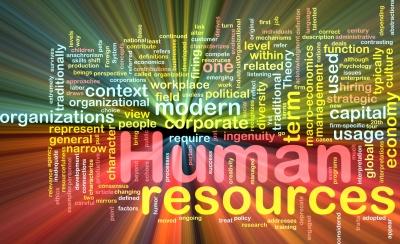How many HR professionals does your company need? This is a frequent question at budgeting time. For many years, the standard answer has typically been roughly one HR professional per 100 employees. (Note: The reference to 100 employees is a count, not a full time equivalency.) But there is no one-size-fits-all answer.
The standard ratio has always varied by industry and, now, with technological advances and the growing trend toward outsourcing, it has become even more difficult to accurately compare this kind of information. Other factors to consider include how employees are dispersed, employees’ level of sophistication, HR’s involvement in strategic initiatives, the specific functions HR performs, and whether the organization is centralized or decentralized.
Workforce size has a significant impact on the ratio
In the 2018 HR Benchmarks Report from Bloomberg BNA, the median ratio of human resources staff to total employment was reported as 1.5 HR staff members per 100 employees. Organizations with fewer than 250 employees tend to have a higher ratio higher than this because in a smaller organization, there tends to be less duplication (and less efficiencies) from event to event. Smaller organizations may have fewer standardized policies and procedures. Additionally, organizations in the early stages of growth need more focus on human capital management.
As an organization’s size gets larger, the ratio of HR staff members per 100 employees tends to be a little lower due to the advantage of economies of scale. Industry also can be a variable with consulting, insurance and finance industries having higher ratios than manufacturing, construction, retail and health care.
Technology has had a huge impact
The more an organization automates transactional processes, pushes decision-making to the lowest levels, and empowers supervisors and employees to access and manage employee information and processes, the less human resources are consumed in administration. Technology has also paved the way for the use of self-service or for outsourcing services such as payroll, COBRA administration, recruiting, onboarding, benefits enrollment and administration, and records management.
Organizational HR philosophy plays a role
If you ask 50 companies of similar size about the top functions of HR, you may get 50 different answers. Some will say they focus on employee relations, while others will point to employee training and development, and still others will stress leadership development and succession planning. Other factors include recruiting and selection, and the number of consultants used. The more the answers vary the more you can expect to see differences in HR staffing needs. These are difficult to measure in any survey.
So, how should you determine the ratio of HR professionals needed for your organization? Use benchmarks as a reference but base your needs on your organization’s strategies for the next three years and what HR needs to do to support them.
Another benchmark to use is dollars instead of people, otherwise known as the HR expense factor. This metric is the ratio of the total cost of HR (the HR budget including consultants and outsourced functions typically in HR) to the total operating expenses of the organization. SHRM benchmark reports show that, on average, the HR expense to operating expense ratio is 15% with expected variations for industry, region, and size. Simply stated, for every $1,000,000 in operating expenses, you would be spending around $150,000 on human capital resources.
These measures can help you benchmark the number of HR professionals needed in your organization. Use them as a starting point, and then consider the variables and how they apply to your unique organization.
Need help with your HR staffing planning? MRA’s HR Business Partners can help you!



